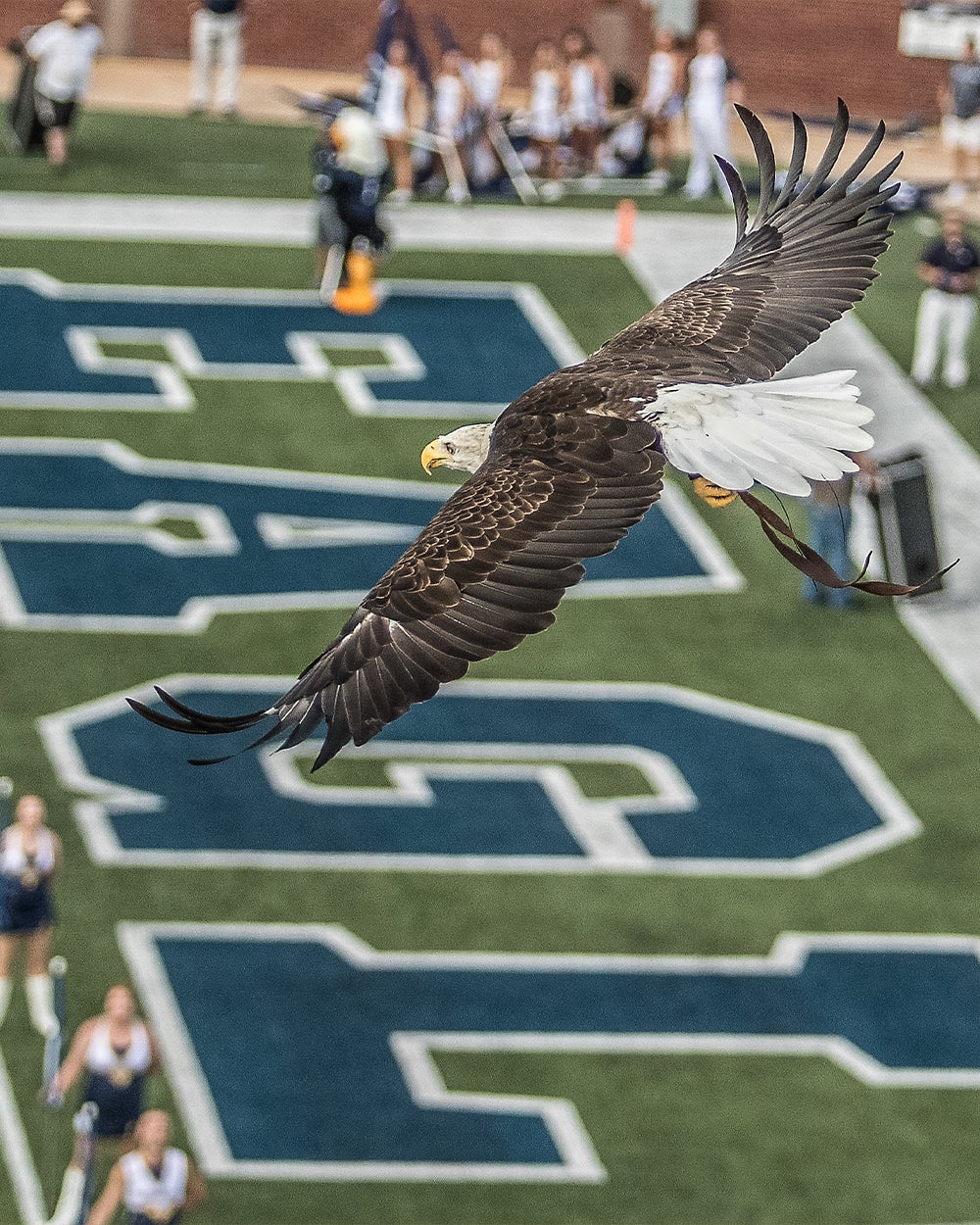Georgia Southern researcher develops motion control technology for Intelligent Aerial Vehicles applications

Robin Lange is spending his summer in his hometown of Raine, Germany. But his mind is back at the Intelligent Vehicles Navigation Research Laboratory at Georgia Southern University.
The sophomore Honors College student researcher is a fixture in the lab, where he’s learning everything he can about unmanned aerial vehicles (UAVs). But his recent obsession has been the Light Detection and Ranging (LiDAR) system.
“I wanted to gain experience with our LiDAR sensor, specifically how it works with drones,” he explained. “I believe that UAVs can use LiDAR to understand their surroundings during autonomous operations.”
LiDAR uses rapid pulses of laser light to detect objects and measure distance. This information is then used to create a 3D map to help the vehicle navigate the terrain. But Lange saw a unique opportunity to use this cutting-edge technology.
“I want to develop a new control method to operate UAVs using the LiDAR sensor,” he said. “My literature review showed that there are many ways to control UAVs, such as using a joystick controller and more. But those are all pretty cognitively demanding.”
That’s what led him to develop a more intuitive, user-friendly method.
“Imagine being able to control a UAV with biomechanical signals,” he explained. “You move your hand forward, and the UAV does the same.”
A pilot would be able to monitor the UAV through a video feed from cameras attached to the aircraft while controlling the entire operation with hand movements interpreted by a LiDAR sensor.
“The theory and the research are revolutionary concepts that could change the landscape of UAV piloting,” explained Lange.
But it took a lot of hard work for him to bring his theory to life.
“I learned a lot about myself during the research process,” he said. “I need to be more comfortable with failing in the beginning. I’m a little bit of a perfectionist, so I try to avoid errors at all costs.”
But those failures are what made him fall in love with the magic of science and engineering all over again.
“Projects like these, you have to start from the beginning when everything feels like a massive puzzle,” he explained. “Suddenly, pieces start fitting together, and you start merging things that seemed disconnected. You get to bring them together to form a working system.”
He presented that working system at Georgia Southern’s 2025 College of Engineering and Computing Research Symposium, where he came in second place for the Georgia Power award for the poster competition.
“I didn’t expect that,” he said. “I looked around and saw what I thought was more impressive research. But I was able to provide a recorded, real demonstration, and I think that’s what separated me from the rest of the presentations.”
He also credits Valentin Soloiu, Ph.D., Allen E. Paulson Distinguished Chair, for working alongside him throughout the research process.

“He saw the value in what I was doing,” explained Lange. “He gave me important feedback, guiding me through the research and poster development. He showed me the value in making my research understandable for people who might not understand it.”
Lange is doubling down on his research after his win at the symposium, which means more time spent outside. He finds inspiration in nature, where the greenery reminds him of his hometown in Rain, Germany. This gives him a space to reflect on his future.
“I have a few options at this point,” he explained. “Either continue my education and get a master’s degree, find work in the U.S. or return to Germany.”
He’s spending the summer in Germany. But even as he enjoys the comforts of home, he’s itching to get back to the States.
“I just can’t wait to be back in the lab,” he said with a smile.
Posted in Press Releases

